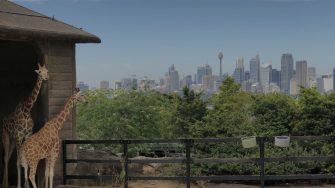
UPDATE: CANDIDATE CHOSEN
Supervisors: Dr Neil Jordan (UNSW), Prof. Richard Kingsford (UNSW), Andrew Elphinstone (Taronga Conservation Society Australia)
Institutions: Centre for Ecosystem Science, School of Biological, Earth and Environmental Sciences, UNSW Sydney & Taronga Conservation Society Australia (Dubbo, NSW).
A PhD opportunity is available for an independent and self-motivated Australian domestic postgraduate student with a 1st Class Honours degree in Biological Sciences. This project will be supported by the Centre for Ecosystem Science (CES), School of Biological, Earth and Environmental Sciences (BEES) at the University of New South Wales (UNSW) Sydney, and by Taronga Conservation Society Australia. The student will need to enrol in a PhD programme within the CES at UNSW Sydney and will need to be successful in acquiring an Australian Government Research Training Program (RTP) or equivalent award. All field work will be conducted at Taronga Western Plains Zoo in Dubbo, and so the successful candidate will need to spend considerable time there, and will be responsible for their own living arrangements and expenses.
The Greater Bilby is an iconic, threatened marsupial that was once widespread throughout arid and semi-arid Australia but, due to habitat loss and introduced predators and herbivores, it has been considered locally extinct in NSW for several decades. Taronga Conservation Society Australia is developing a 110-hectare breeding sanctuary for the Greater Bilby at Taronga Western Plains Zoo in Dubbo. The area will be fully fenced and cleared of predators and competing herbivores such as cats, foxes and rabbits prior to the initial introduction of Greater Bilbies to the sanctuary in Autumn 2018. Animals from this breeding population will be reintroduced to the wild at multiple release sites, including Sturt NP in NSW from late 2019, but this PhD will focus on animals released into the breeding sanctuary.
Brief summary of the proposed study:
The proposed project will investigate the movement ecology, diet, survival and reproductive success of Greater Bilby in a breeding sanctuary in Dubbo, NSW. Founders will be from multiple source populations likely to include captive managed, semi-wild and wild. Animals introduced to the sanctuary will be fitted with telemetry devices to allow their movements, behaviour, survival and reproductive success to be determined.
We're seeking applicants with a demonstrated ability to work safely and independently in a field setting. They must be highly self-motivated and detail oriented. Relevant experience includes animal handling, wildlife tracking and monitoring, mark-recapture techniques, project management, GIS mapping, and the ability to produce publication quality scientific writing, but extensive prior experience is not expected. The successful applicant will receive limited fellowship support from UNSW and Taronga zoo, must enrol in a PhD programme at UNSW Sydney starting in Semester 2 in 2018, and after successful selection will need to acquire an Australian Government Research Training Program (RTP) or equivalent award to take up the position.
Please send an updated CV and a cover letter explaining your suitability for the role to Dr Neil Jordan (neil.jordan@unsw.edu.au) on or before 6 April 2018. Interviews will be arranged shortly after this, and the successful candidate will be required to submit a formal postgraduate study application to UNSW in April 2018 and to commence the work in Semester 2 2018 (July).
